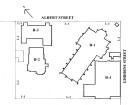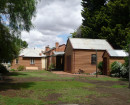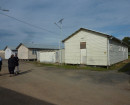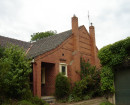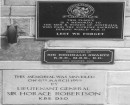TRONOH DREDGE HOLES: SOUTH HOLE
DREDGE HOLE LANE HARRIETVILLE, ALPINE SHIRE
-
Add to tour
You must log in to do that.
-
Share
-
Shortlist place
You must log in to do that.
- Download report
Statement of Significance
The Tronoh bucket dredge was the biggest in the southern hemisphere: it measured 167 metres long, weighed 4,813 tonnes, and could dredge to a depth of approximately 41 metres. The dredge was built by Thompsons of Castlemaine, and an electricity line to power the plant was installed from Bright. Construction costs totalled £380,000. The Tronoh dredge commenced operations in 1942 and ceased work in 1954. The Tronoh leases extended southwards for a distance of 7 km from a point halfway between Stoney and Smoko creeks. The total gold production of the Tronoh dredge at Harrietville was 54,000 oz. (The highest producing dredge in the State was the Victoria Gold Dredging Co NL Strangway's dredge, which produced 115,941 ounces of gold between 1938 to 1948.) In 1955, the Tronoh dredge was sold and shipped to Malaya.
The Tronoh Gold Dredging Pond is of historical and scientific significance to the State of Victoria.
The Tronoh Gold Dredging Pond is historically and scientifically as a characteristic example of an important form of gold mining. Gold mining sites are of crucial importance for the pivotal role they have played since 1851 in the development of Victoria. As well as being a significant producer of Victoria's nineteenth century wealth, gold mining, with its intensive use of machinery played an important role in the development of the State's manufacturing industry. The Tronoh Gold Dredging Pond is a striking visual monument to the largest bucket dredge built in Australia with the southern-most pond reflecting the vessel's enormous dimensions.
[Source: Victorian Heritage Register]
-
-
TRONOH DREDGE HOLES: SOUTH HOLE - History
Heritage Inventory History of Site:
In 1938, the London-based Tronoh Finance Co. (already with dredging interests in Malaya) leased river flats totalling 356 hectares on the Upper Ovens. The Tronoh leases extended southwards for a distance of 7 km from a point halfway between Stoney and Smoko creeks. The bucket dredge was the biggest in the southern hemisphere: it measured 167 metres long, weighed 4,813 tonnes, and could dredge to a depth of approximately 41 metres. The dredge was built by Thompsons of Castlemaine, and an electricity line was installed from Bright. Construction costs totalled £380,000.
The Tronoh dredge commenced operations in 1942. Soon after, however, wartime manpower restrictions forced its closure for the duration of the WW2, and it was 1946 before operations commenced in earnest. The dredge turned to face north in 1949, the same year in which it returned its highest average yield of 2.29 grains per cubic yard. In fact, the annual volumes of material excavated by the dredge did not exceed much more than half the projected target. Added to that, continuing low yields and high labour costs eventually made operations unprofitable and the dredge ceased work in 1954. The total gold production of the Tronoh dredge at Harrietville was 54,000 oz. The company failed to honour the land rehabilitation and reclamation covenants on its leases. In 1955, the Tronoh dredge was sold and shipped to Malaya.Heritage Inventory Description
TRONOH DREDGE HOLES: SOUTH HOLE - Heritage Inventory Description
Situated at southern end of tailings dump. When working this hole, the dredge was turned back by rising bedrock (visible on the southern face of the hole) and turned northwards, reworking its own tailings.
Heritage Inventory Significance: National Estate. The site has historical significance as a relic associated with Australia's largest dredge.
-
-
-
-
-
TRONOH GOLD DREDGING PONDS
 Victorian Heritage Register H1756
Victorian Heritage Register H1756 -
TRONOH DREDGE HOLES: TURNING SCARS
 Victorian Heritage Inventory
Victorian Heritage Inventory -
HARRIETVILLE CHINESE CAMP SITE
 Victorian Heritage Inventory
Victorian Heritage Inventory
-
-

